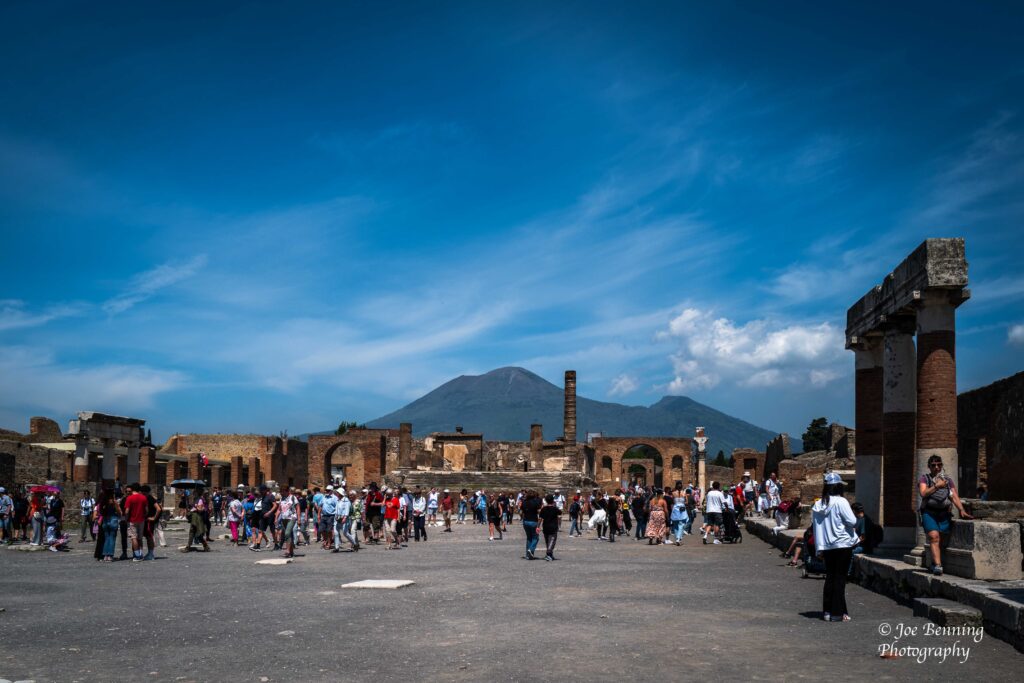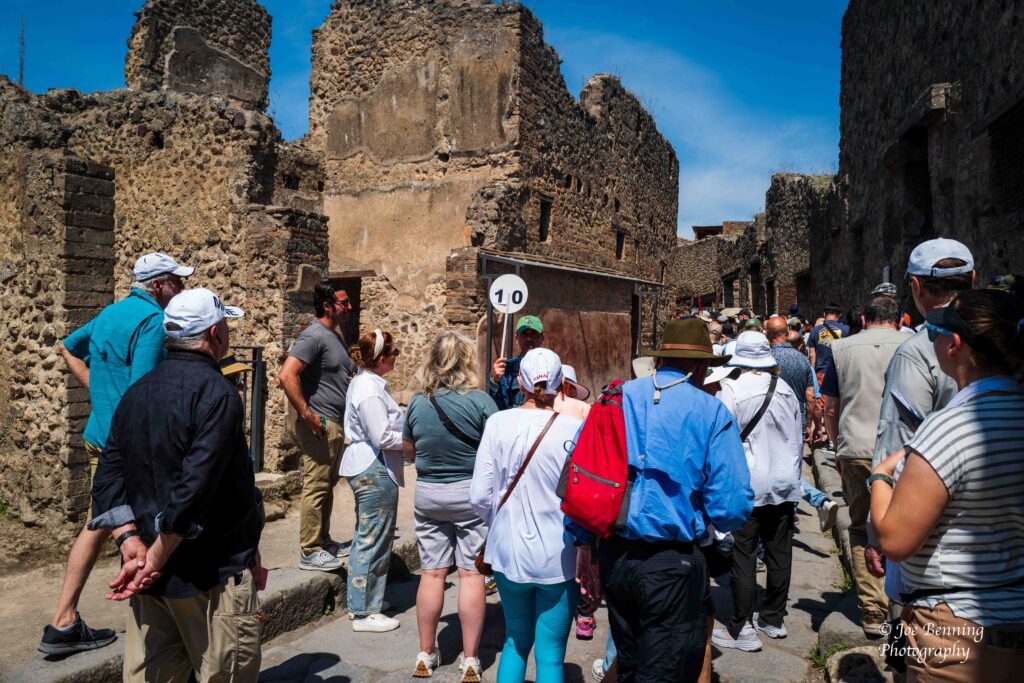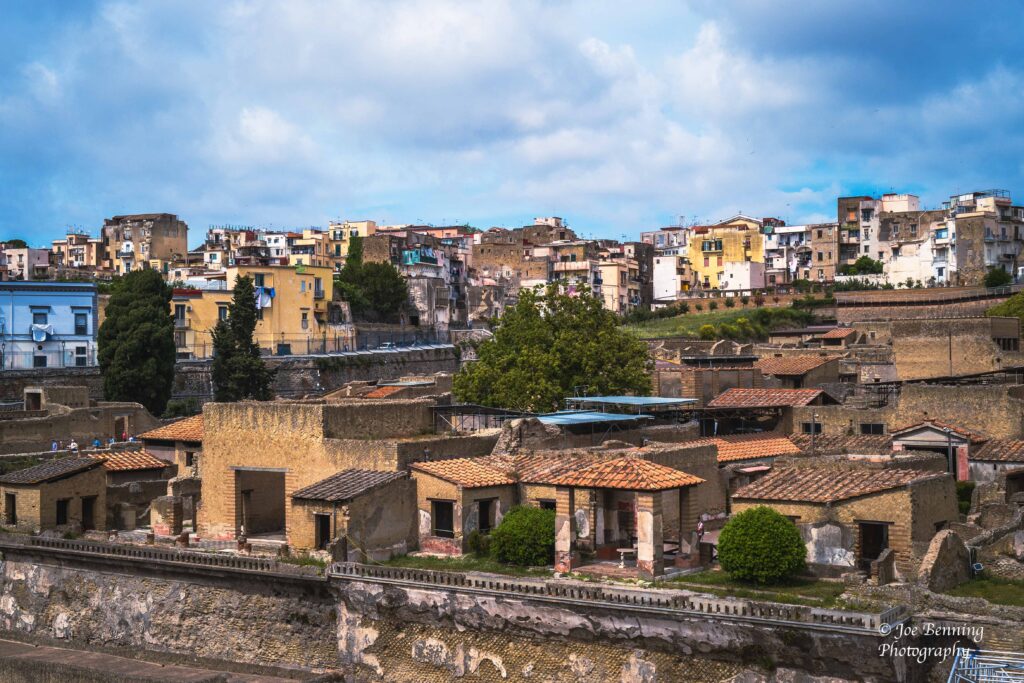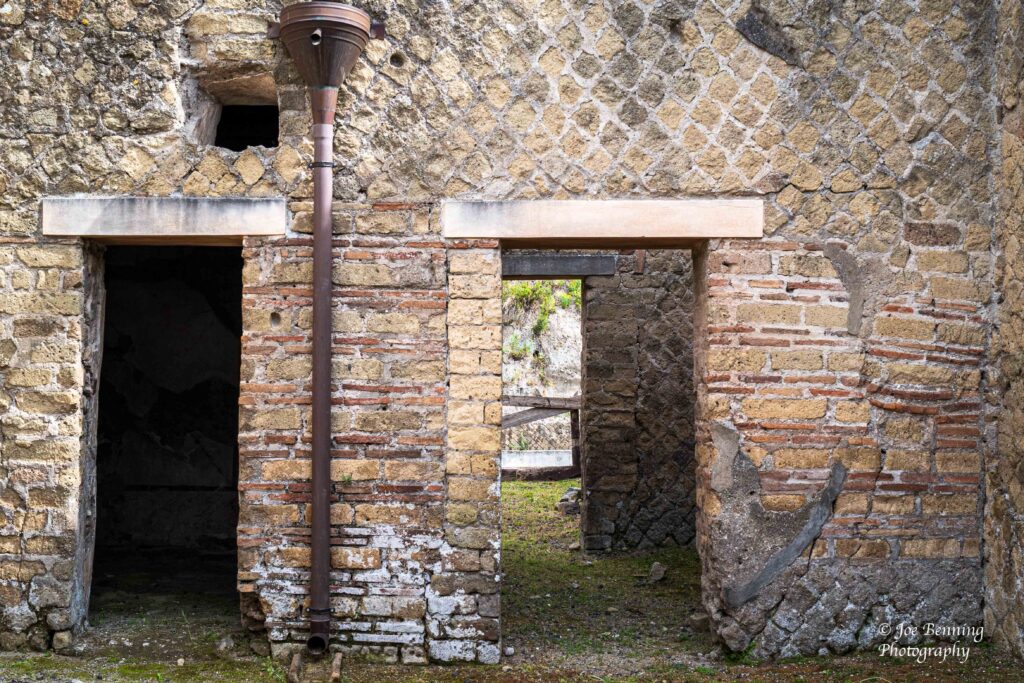When our ship docked in Naples, we had the opportunity to visit the ruins of Pompeii and Herculaneum.
Pompeii was instantly buried beneath 30 feet of volcanic ash and cinder when Mount Vesuvius erupted in 79 A.D. People living in the city perished instantly when the volcanic ash poured down on the city.

We had an interesting tour of the portion of the city that has been excavated. We saw streets, homes, and shops that were preserved intact as a result of the instantaneous cascade of volcanic ash that rained down on the city. Consequently it provided a glimpse of Roman life as it was 2000 years ago.

We then visited the nearby city of Herculaneum, which was a both wealthier and smaller than Pompeii.

Nearby Herculaneum was destroyed by massive lava flows from the eruption of Mount Vesuvius. Before the volcano erupted, some of the wealthy inhabitants of the town were able to leave by ship. Others didn’t make it out. The homes that they left behind were buried in mud and are therefore well preserved. In fact, residents of the city knew how to construct walls in a way that would withstand some earthquakes, which made it even easier to see some of the structures in their original state.

It was interesting to imagine how life was in these towns 2000 years ago, and to see the contrast between the two cities in terms of the wealth of the inhabitants. Also very interesting to see the manners in which the cities were destroyed (or left intact) by natural disasters.
JFB and MAM
